Themed collection Most popular 2018-2019 supramolecular chemistry articles

Electrochemically switchable rotaxanes: recent strides in new directions
Electrochemically controllable rotaxanes are prime examples of supramolecular switches and promising prototypes for artificial molecular machines. This perspective discusses recent progress and applications beyond classical molecular shuttles.
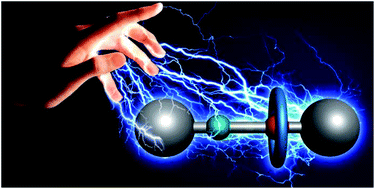
Chem. Sci., 2019,10, 9626-9639
https://doi.org/10.1039/C9SC04118D
Proton transfer in hydrogen-bonded degenerate systems of water and ammonia in metal–organic frameworks
Porous crystalline metal–organic frameworks (MOFs) are emerging as a new class of proton conductors through the hydrogen-bonded degenerate system.
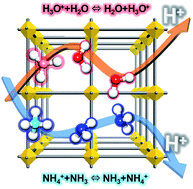
Chem. Sci., 2019,10, 16-33
https://doi.org/10.1039/C8SC04475A
Supramolecular scaffolds enabling the controlled assembly of functional molecular units
This perspective describes the construction of 0D–3D organic and polymeric architectures using “robust” supramolecular scaffolds.
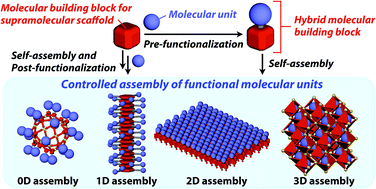
Chem. Sci., 2018,9, 2028-2041
https://doi.org/10.1039/C7SC04340F
Polyoxometalates as components of supramolecular assemblies
The non-covalent interactions between polyoxometalates and inorganic- and organic-based moieties give rise to functional nanoassemblies with diverse potential in applied science.
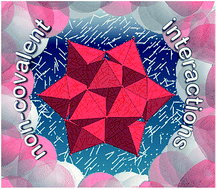
Chem. Sci., 2019,10, 4364-4376
https://doi.org/10.1039/C9SC00979E
The self-disproportionation of enantiomers (SDE): a menace or an opportunity?
Herein we report on the well-documented, yet not widely known, phenomenon of the self-disproportionation of enantiomers (SDE): the spontaneous fractionation of scalemic material into enantioenriched and -depleted fractions when any physicochemical process is applied.
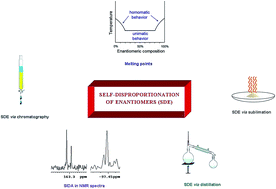
Chem. Sci., 2018,9, 1718-1739
https://doi.org/10.1039/C7SC05138G
A tetrahedral molecular cage with a responsive vertex
The first system to combine the orthogonality of alkyne metathesis and dynamic imine exchange is reported for the preparation of a molecular cage with a reversibly removable vertex.
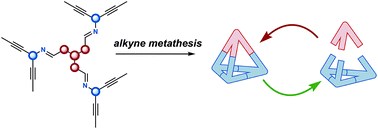
Chem. Sci., 2019,10, 7043-7048
https://doi.org/10.1039/C9SC02047K
H-Bond donor parameters for cations
Parameters that provide a quantitative description of the free energy of interaction of cations with any H-bond acceptor in any solvent have been experimentally determined.
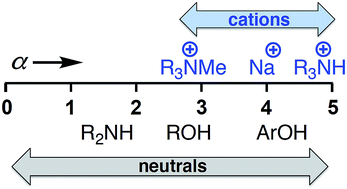
Chem. Sci., 2019,10, 5943-5951
https://doi.org/10.1039/C9SC00721K
Impact of charge switching stimuli on supramolecular perylene monoimide assemblies
A switchable perylene monoimide which undergoes reversible morphological and electronic changes controlled by the ionization state of the phenolic oxygen.
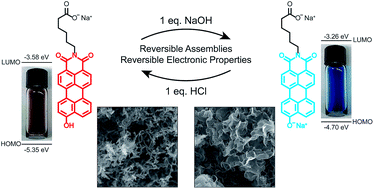
Chem. Sci., 2019,10, 5779-5786
https://doi.org/10.1039/C8SC05595E
Guest recognition enhanced by lateral interactions
Lateral interactions enhance the guest inclusion and peripheral complexation within a highly charged covalent cage.
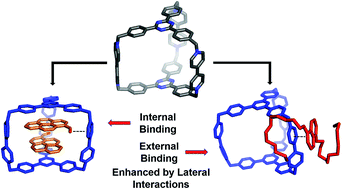
Chem. Sci., 2019,10, 5114-5123
https://doi.org/10.1039/C9SC00591A
Functionality in metal–organic framework minerals: proton conductivity, stability and potential for polymorphism
Metal–organic framework minerals stepanovite and zhemchuzhnikovite can exhibit high proton conduction and structure retention on dehydration.
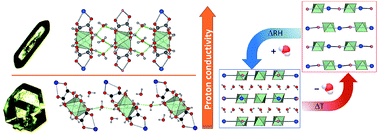
Chem. Sci., 2019,10, 4923-4929
https://doi.org/10.1039/C8SC05088K
Photo-responsive cyclodextrin/anthracene/Eu3+ supramolecular assembly for a tunable photochromic multicolor cell label and fluorescent ink
A photoresponsive supramolecular assembly was constructed and presented multi-color fluorescence emissions in several environments including solution, PVA and living cells.
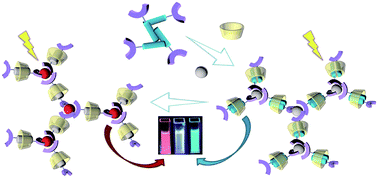
Chem. Sci., 2019,10, 3346-3352
https://doi.org/10.1039/C9SC00026G
Dynamic polyimine macrobicyclic cryptands – self-sorting with component selection
Self-assembling macrobicyclic cryptand-type organic cages display remarkable self-sorting behavior with efficient component selection.
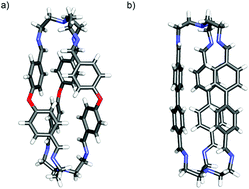
Chem. Sci., 2019,10, 1836-1843
https://doi.org/10.1039/C8SC04598D
Chemical and photochemical DNA “gears” reversibly control stiffness, shape-memory, self-healing and controlled release properties of polyacrylamide hydrogels
Stimuli-responsive polyacrylamide hydrogels crosslinked by glucosamine–boronate/G-quadruplexes or azobenzene-functionalized DNA reveal controlled stiffness using chemical or photochemical triggers.
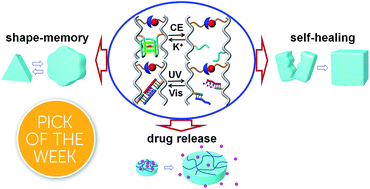
Chem. Sci., 2019,10, 1008-1016
https://doi.org/10.1039/C8SC04292F
A highly soluble, crystalline covalent organic framework compatible with device implementation
We report a soluble yet crystalline covalent organic framework (COF) by regulation of inter-layer interactions, which endows the COF with remarkable solubility and processability of thin films for optoelectronic devices that exhibit high yet anisotropic conductivities and outperform all the other COF-based semiconductors.
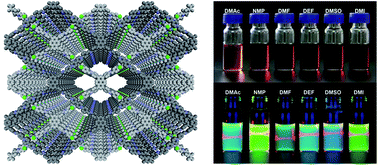
Chem. Sci., 2019,10, 1023-1028
https://doi.org/10.1039/C8SC04255A
Palladium-scavenging self-assembled hybrid hydrogels – reusable highly-active green catalysts for Suzuki–Miyaura cross-coupling reactions
From waste to wealth – a self-assembled hydrogel remediates palladium from solution down to sub-ppm levels, and the resulting gel, which has embedded Pd nanoparticles, acts as a green and efficient catalyst for Suzuki–Miyaura cross-coupling reactions.

Chem. Sci., 2018,9, 8673-8681
https://doi.org/10.1039/C8SC04561E
Double layer 3D codes: fluorescent supramolecular polymeric gels allowing direct recognition of the chloride anion using a smart phone
The top layer of a two-layer 3D code can be delaminated and removed by exposure to a chloride anion source.

Chem. Sci., 2018,9, 7746-7752
https://doi.org/10.1039/C8SC03463J
Shape-memory and self-healing functions of DNA-based carboxymethyl cellulose hydrogels driven by chemical or light triggers
Photoresponsive hydrogels crosslinked by trans-azobenzene/β-cyclodextrin and duplex DNA or K+-G-quadruplex are described. The hydrogels reveal shape-memory functions and self-healing properties.
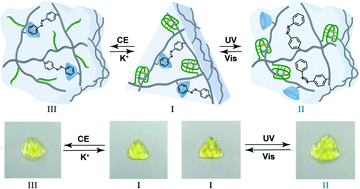
Chem. Sci., 2018,9, 7145-7152
https://doi.org/10.1039/C8SC02411A
Hydrogen-bonded perylene bisimide J-aggregate aqua material
A water-soluble perylene bisimide dye self-assembles in aqueous media into thermoresponsive aqua materials with photoluminescence within the biological transparency window.
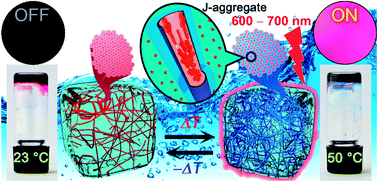
Chem. Sci., 2018,9, 6904-6911
https://doi.org/10.1039/C8SC02409J
The intramolecular hydrogen bonded–halogen bond: a new strategy for preorganization and enhanced binding
Intramolecular hydrogen bonding directly to halogen bond donors preorganizes molecular structure and strengthens halogen bonding.
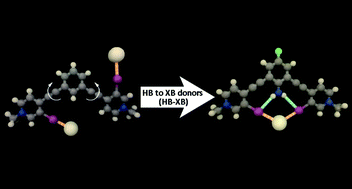
Chem. Sci., 2018,9, 5828-5836
https://doi.org/10.1039/C8SC01973H
White-light emission from a single organic compound with unique self-folded conformation and multistimuli responsiveness
White-light emission from a single molecule was realized and tuned via multistimuli including excitation, solvent polarity, temperature and host–guest interactions.
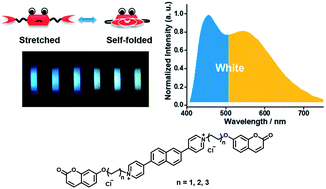
Chem. Sci., 2018,9, 5709-5715
https://doi.org/10.1039/C8SC01915K
Reversible disassembly of metallasupramolecular structures mediated by a metastable-state photoacid
Only stable in the dark: when mixed with a metastable-state photoacid, metallasupramolecular structures become light sensitive. The photo-induced disassembly of the structures is reversed when the light is switched off.
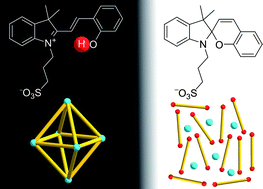
Chem. Sci., 2018,9, 4253-4257
https://doi.org/10.1039/C8SC01108G
A halogen bond-mediated highly active artificial chloride channel with high anticancer activity
Modularly tunable monopeptidic scaffold enables rapid and combinatorial evolution of a halogen bond-mediated highly active chloride channel, exhibiting an excellent anticancer activity toward human breast cancer.
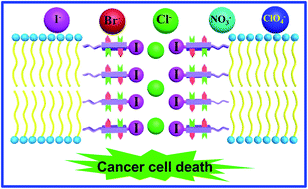
Chem. Sci., 2018,9, 4044-4051
https://doi.org/10.1039/C8SC00602D
The development of a novel AND logic based fluorescence probe for the detection of peroxynitrite and GSH
We have developed a novel AND logic based fluorescence probe for the simultaneous detection of ONOO− and GSH (GSH-PF3).
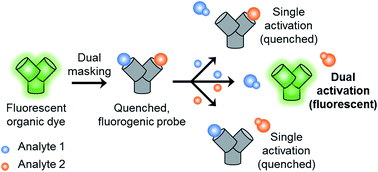
Chem. Sci., 2018,9, 3672-3676
https://doi.org/10.1039/C8SC00733K
XBphos-Rh: a halogen-bond assembled supramolecular catalyst
XBphos-Rh constitutes the first example of halogen bonding as the driving force behind the assembly of a transition-metal catalyst for hydroborations.
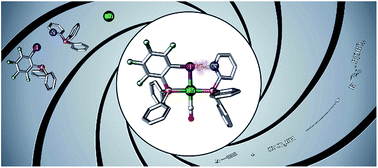
Chem. Sci., 2018,9, 3644-3648
https://doi.org/10.1039/C8SC00233A
Phosphate–phosphate oligomerization drives higher order co-assemblies with stacks of cyanostar macrocycles
Phosphate–phosphate oligomerization is shown to drive its recognition properties as revealed in co-assemblies with stackable macrocyclic hosts.

Chem. Sci., 2018,9, 2863-2872
https://doi.org/10.1039/C7SC05290A
Investigation of excited state, reductive quenching, and intramolecular electron transfer of Ru(II)–Re(I) supramolecular photocatalysts for CO2 reduction using time-resolved IR measurements
Time-resolved IR spectra indicated fast electron transfer from the reduced photosensitizer to the catalyst.
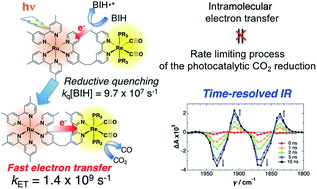
Chem. Sci., 2018,9, 2961-2974
https://doi.org/10.1039/C7SC05338J
Pathway complexity in the self-assembly of a zinc chlorin model system of natural bacteriochlorophyll J-aggregates
Self-assembly studies of a model compound of bacteriochlorophyll revealed the formation of nanoparticles as off-pathway and nanofibers as on-pathway products.
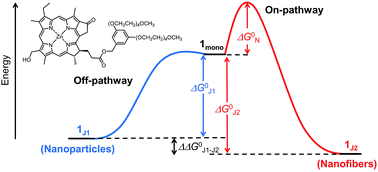
Chem. Sci., 2018,9, 2768-2773
https://doi.org/10.1039/C7SC03725B
Ultrasensitive and specific fluorescence detection of a cancer biomarker via nanomolar binding to a guanidinium-modified calixarene
A well-designed macrocycle affords nanomolar binding to a cancer biomarker lysophosphatidic acid, showing potential application in the diagnosis of gynecologic cancers.
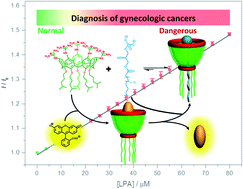
Chem. Sci., 2018,9, 2087-2091
https://doi.org/10.1039/C7SC04989G
Cage-templated synthesis of highly stable palladium nanoparticles and their catalytic activities in Suzuki–Miyaura coupling
Cage-templated synthesis of narrowly distributed palladium nanoparticles (1.8 ± 0.2 nm) and their high catalytic activity in Suzuki–Miyaura coupling reactions are reported.
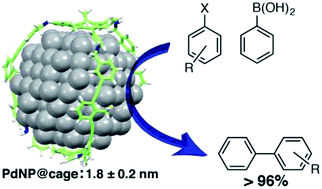
Chem. Sci., 2018,9, 676-680
https://doi.org/10.1039/C7SC03148C
Metal–organic layers stabilize earth-abundant metal–terpyridine diradical complexes for catalytic C–H activation
Metal–organic layers stabilize FeII or CoII-terpyridine diradical complexes to catalyze alkylazide Csp3–H amination and benzylic C–H borylation, respectively.
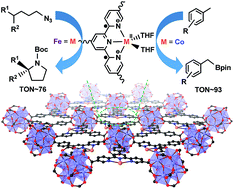
Chem. Sci., 2018,9, 143-151
https://doi.org/10.1039/C7SC03537C
About this collection
This specially curated collection pulls together some of the most popular articles from 2018 and 2019 in the field of supramolecular chemistry. The collection presents some outstanding contributions to the field, ranging from a halogen-bond assembled supramolecular catalyst, XBphos-Rh, to a review of electrochemically switchable rotaxanes, and as with all Chemical Science articles – they are all completely free to access and read. We hope you enjoy browsing through this collection.
See also: